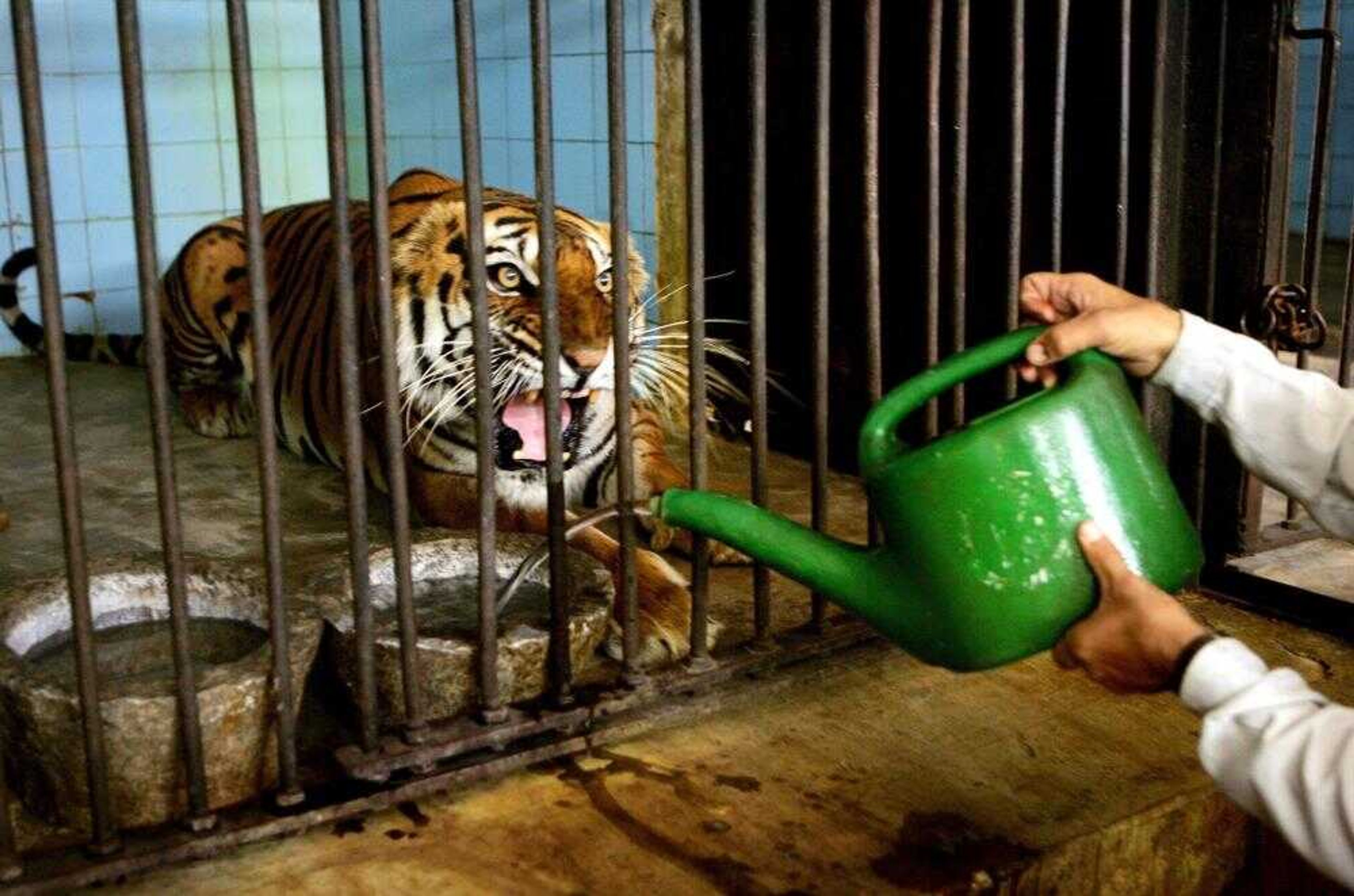Study: India's tiger population far lower than believed
NEW DELHI -- India's population of wild tigers, which wildlife experts have long warned is on the decline, is dramatically lower than previously believed, according to preliminary results of an exhaustive study of tiger habitats released Wednesday...
~ Full results of the study are not expected until late this year.
NEW DELHI -- India's population of wild tigers, which wildlife experts have long warned is on the decline, is dramatically lower than previously believed, according to preliminary results of an exhaustive study of tiger habitats released Wednesday.
The study, conducted over the past two years by the government-run Wildlife Institute of India, found that the tiger population in some states may be nearly 65 percent less than experts had thought.
Full results of the study are not expected until late this year, but conservationists said the early results indicated the most recent tiger census -- which found about 3,500 tigers -- was far too optimistic.
"The results are depressing," said Belinda Wright, director of the Wildlife Protection Society of India and one of the foremost big cat conservationists in the country. "But it's a major step forward that a government study has finally come to terms with this disastrous decrease in tiger numbers."
Poaching and encroachment on tiger habitat have savaged India's tiger population, which a century ago was believed to number in the tens of thousands.
The key to protecting the animals now, according to experts who have reviewed the results, is ensuring tigers are able to hunt, mate and travel between the country's protected reserves, ensuring enough prey for the cats and keeping inbreeding to a minimum.
"Our biggest challenge is to conserve these linkages between protected areas," said Rajesh Gopal, secretary-general of the government's Tiger Conservation Authority of India, which also took part in the survey. "Only then can we save the tiger."
The last major tiger census, performed in 2001 and 2002, relied on estimating the cat population by examining footprints. The current study is far more extensive, using cameras "traps" triggered by passing animals, as well as hundreds of wildlife officers tracking the animals through droppings and footprints.
In Madhya Pradesh, a central Indian state thought to be home to a large percentage of the country's tigers, the new results estimated that anywhere from 210 to 340 tigers currently live in and around the state's wildlife preserves -- far lower than the 710 estimated in the previous survey.
"The figures are quite different from what we've seen earlier," said Gopal. He noted, though, that the new study was far more detailed than anything in the past.
In 2001, the U.S. National Geographic Society estimated that 5,000 to 7,000 Bengal -- or Indian -- tigers existed in the wild, about half in India.
However, conservationists believe official estimates of tigers in the wild are grossly exaggerated and the true figure may be closer to 2,000 -- or as little as several hundred.
Connect with the Southeast Missourian Newsroom:
For corrections to this story or other insights for the editor, click here. To submit a letter to the editor, click here. To learn about the Southeast Missourian’s AI Policy, click here.









